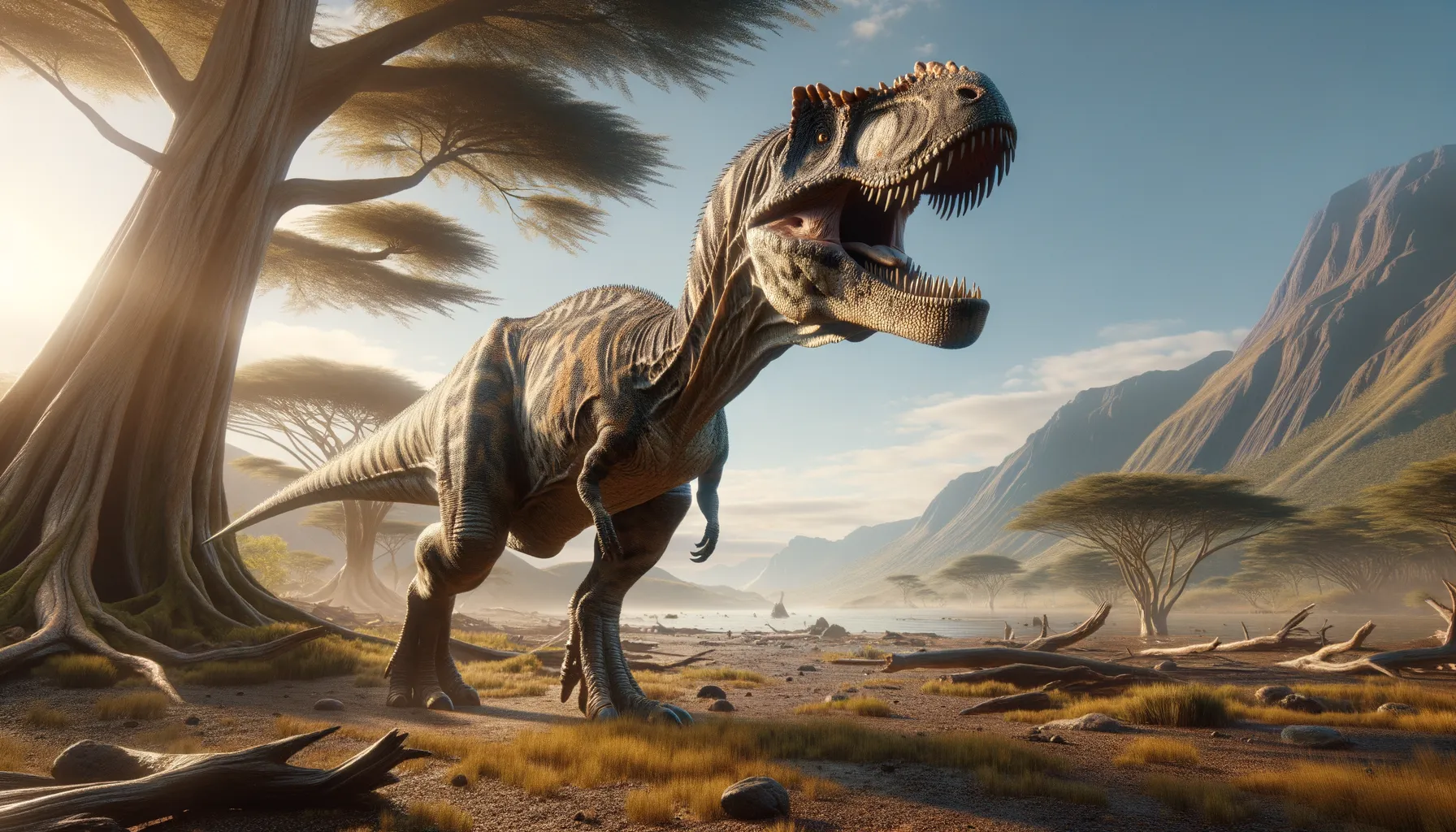
Frenguellisaurus
Triassic predator on the move!
Period
Triassic
Length
Roughly 4 to 5 meters (13 to 16 feet) long.
Height
Approximately 1.5 meters (5 feet) at the hips.
Weight
Around 200 to 300 kilograms (440 to 660 pounds).
Frenguellisaurus was a theropod dinosaur that roamed the Earth during the late Triassic period. This predator was distinguished by its bipedal stance and sharp teeth, adapted for a carnivorous diet. With a moderate size compared to later theropods, Frenguellisaurus was a skilled hunter of its time. Its fossils, primarily found in South America, particularly Argentina, offer a glimpse into the diverse prehistoric ecosystems.
Diet
Frenguellisaurus was a carnivore, primarily feeding on smaller reptiles and possibly early mammals. Its teeth were adapted for slicing through flesh, indicating it was an active predator.
Hunting
As a bipedal hunter, Frenguellisaurus likely relied on stealth and speed to ambush its prey. Its keen senses helped it detect potential meals in its environment, making it an effective predator of its time.
Environmental challenges
During the late Triassic, the environment was semi-arid with seasonal changes, which posed challenges in terms of water and food availability. Climate fluctuations could lead to periods of scarcity, forcing Frenguellisaurus to adapt its hunting and foraging strategies. Other competing predators also presented challenges in securing enough food resources.
Speed
Moderate, likely around 25 mph in short bursts.
Lifespan
Approximately 20 to 30 years in the wild.
First discovery
First discovered in Argentina during the late 20th century.
Fun Facts
- Frenguellisaurus was a dinosaur that lived during the Late Triassic period, around 228 million years ago.
- Its name, Frenguellisaurus, honors Argentine geologist Frenguelli, highlighting the importance of paleontological discoveries in Argentina.
- This dinosaur belonged to a group known as herrerasaurids, which were some of the earliest theropods.
- Frenguellisaurus was a carnivore, likely preying on smaller animals with its sharp teeth and claws.
- It was relatively small compared to later theropods like the T. rex, with estimates suggesting it was about 3 meters long.
- Fossils of Frenguellisaurus have provided scientists with valuable insights into the early evolution of theropod dinosaurs.
- The Frenguellisaurus discovery showcases the diversity of dinosaur life in South America during the Triassic period.
Growth and Development
Frenguellisaurus grew relatively quickly to reach its adult size, a common trait among theropods. Juveniles may have been more vulnerable to predation, prompting rapid development to adulthood. As they grew, changes in their skeletal structure occurred, allowing for better movement and hunting abilities.
Habitat
Frenguellisaurus inhabited a range of environments, including forested areas and open plains. Its habitat provided cover for stalking prey, as well as access to water sources needed for survival. The lush regions and riverbanks would have been favorable for its predatory lifestyle.
Interaction with other species
Frenguellisaurus likely interacted with a variety of species, both as competitors and prey. It may have competed with other carnivores for food and territory. Cooperative or social behavior is not well-documented, but it might have tolerated conspecifics while hunting or during mating seasons.
Natural lifespan
Frenguellisaurus had a natural lifespan of approximately 20 to 30 years.
Reproduction
Frenguellisaurus likely laid eggs, with nesting sites possibly chosen for safety from predators. Clutches likely contained multiple eggs, with several juveniles hatching at once. Parental care details are speculative, though they might have stayed near their nests until offspring were capable of independent movement.
Social behaviour
Frenguellisaurus may have been primarily solitary, like many theropods, though it might occasionally come together for breeding. Social interactions would have been limited and primarily focused on mating and territorial disputes. Any evidence of pack behavior remains speculative.
Fossil locations
Fossils of Frenguellisaurus have been primarily discovered in Argentina, providing significant insights into its biology and environment. These finds help paleontologists understand the distribution and diversity of Triassic theropods in South America. Ongoing excavations continue to uncover more about its life and times.
